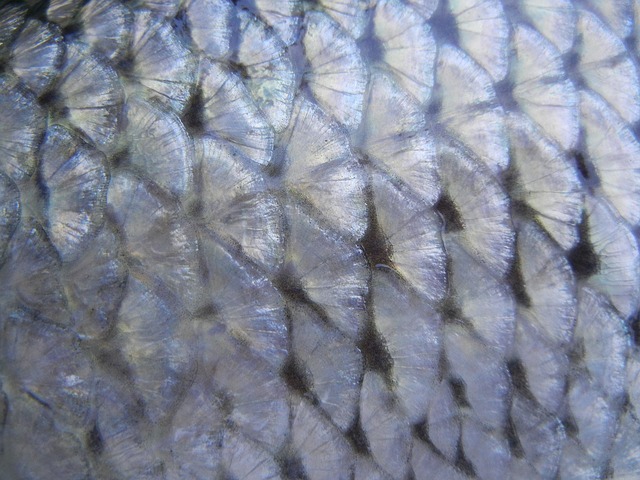By Lynda Kiernan-Stone, Global AgInvesting Media
Sustainable aquaculture and related tech investor Aqua-Spark has made its first investment in a public company, investing €10 million (US$11.5 million) in exchange for a significant stake in Hofseth Biocare ASA (HBC), a Norwegian biotech company developing high-value ingredients and finished products for the consumer health market.
HBC’s revolutionary process takes the aquaculture industry one step closer to true sustainability. Its novel, disruptive solution uses hydrolysis technology to preserve the quality of lipids, proteins, and calcium from fresh salmon off-cuts, valorizing waste streams of farmed salmon processing. However, the potential exists to expand into other species. This ability closes the loop of the closed business model and addresses one of the biggest challenges of modern day aquaculture – off-cuts and sidestreams.
“We are extraordinarily enthusiastic about our investment in Hofseth Biocare,” said Amy Novogratz and Mike Velings, co-founders, Aqua-Spark. “We were first attracted to HBC because their products perfectly close the loop of a circular economy business model by enzymatically hydrolysing the side streams of non-GMO antibiotics-free, Norwegian Atlantic salmon. By reducing waste and increasing the financial and nutritional value of the whole fish, We see Hofseth Biocare’s model as an instrumental step in furthering the sustainability of the aquaculture industry.”
Aqua-Spark carried out a period of careful due diligence that included site visits, market analysis, and expert consultations before deciding to make this long-term strategic investment that carries with it the intention to significantly expand over time.
“We believe that the company is on the cusp of an inflection point operationally and from an R&D perspective,” said Novogratz and Velings. “In addition, the health benefits are truly extraordinary, and we are excited to see the latest results from trials and studies to be completed later this year and next.”
They continued, “We view the company as a ‘best-in-class’ manufacturer of consumer health and pet health ingredients, and as an incubator of new drug leads. The latter is certainly something that the market has overlooked. Hofseth Biocare has incredible findings and patents, as well as ongoing trials in the fields of Asthma and IBS, where its natural health products may be able to address a significant unmet need for mild to moderate cases of both conditions. We have stepped into the listed market for the first time as we believe that this company’s potential is significant and undervalued by public markets on a long-term view.”
In Other News…
Aqua-Spark’s first Aqua Insights Report released in mid-September was an in-depth, 92-page exploration of the current geography and potential for tilapia farming in sub-Saharan Africa.
By 2050 the population of the sub-Saharan region is expected to double from 1-2 billion people. This explosive increase will lead to fish demand that dwarfs what we see today – with forecasts for demand to climb from 10 million metric tons per year today to between 16-29 million metric tons per year by 2050.
This demand pressure will never be able to be met, or even substantially alleviated, through wild-catch fishing due to overexploitation, leaving aquaculture to fill the impending void in supply. And, as the second-most fished species in the world, and due to its ability to easily scale, its healthy reputation, its sustainability, and its affordability, Aqua-Spark stated that it has identified tilapia as the fish of choice for the job, and announced its commitment to a Q4 2021 launch of a $300 million Aqua-Spark Africa Fund dedicated fully to aquaculture in sub-Saharan Africa.
However, Aqua-Spark admits that tilapia alone will not solve the food challenges being faced in the sub-Saharan region, noting in a recent insight post that the production of catfish is also growing at a similar, or possibly even faster, rate than tilapia.
“We definitely believe that catfish, besides tilapia, can become an engine for the growth of sub-Saharan Africa’s aquaculture industry,” stated Aqua-Spark. “If consumer acceptance is there, contrary to tilapia that we think will—in the short term—mainly be produced in cages and ponds, we expect catfish production to already have significant potential relatively soon in and around cities where farmers can grow the fish in tanks and RAS.”
Furthermore, unlike tilapia, catfish is often smoked, meaning that catfish production and processing offers job creation and opportunities in the downstream supply chain.
To capitalize upon this potential, Aqua-Spark stated that it plans on targeting larger companies that can evolve into platforms for growth for the broader aquaculture industry via outgrower programs. Through this model, smaller entrepreneurial farms can obtain their inputs and sell their output through these larger platforms, which will then process the fish into value-added products, thus developing a larger market for catfish.
Aqua-Spark says that its on the lookout for catfish producers that fit this role in Nigeria and other countries, such as Ghana and Uganda – three countries which are pioneering the expansion of catfish production in the sub-Saharan region.
“We believe that it’s only a matter of time before a broader catfish industry will be developed in those countries where consumer acceptance is realistic,” concluded Aqua-Spark.
– Lynda Kiernan-Stone is editor with GAI Media, and is managing editor and daily contributor for Global AgInvesting’s AgInvesting Weekly News and Agtech Intel News, as well as HighQuest Group’s Oilseed & Grain News. She can be reached at lkiernan-stone@




